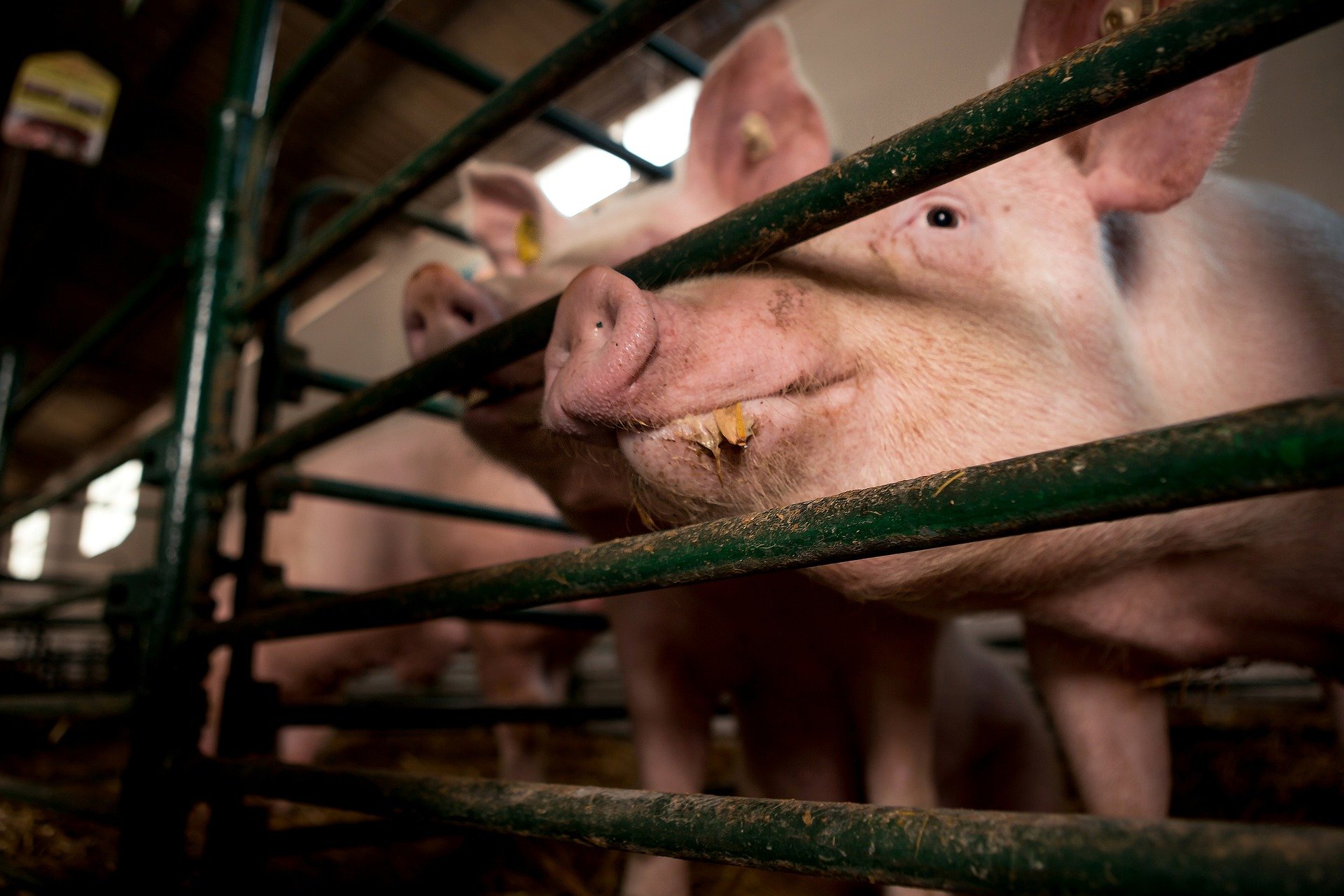Vitamins can be defined as organic compounds, which function in small amounts (mg or g) and are essential to the normal functioning of the animal body.
They cannot be synthesized in adequate amounts by body tissues and when lacking, provoke deficiency disease.
Vitamin Requirement in Pigs’ diet
Vitamins are normally required in the diet of pigs, of which four are fat-soluble and ten are water-soluble.
The fat-soluble vitamins are:
- Vitamin A
Deficiency of vitamin A in pig’s diet causes night blindness in pigs, birth of blind piglets, lacrimation of eyes and nasal discharges, rough and dry hair coats.
Vitamin is also needed in swine reproduction, and lack of vitamin A will lead to a decrease in ovarian and testicular size and increase embryo mortality.
- Vitamin D
Through its relationship with calcium and phosphorus metabolism, deficiency can lead to rickets and osteomalacia.
If pigs have access to sunlight, vitamin D may be synthesized in adequate amounts in the skin.
- Vitamin E
Vitamin E interacts closely with selenium, and the main deficiency symptoms are listed under selenium.
A deficiency will also lead to reproduction disturbances and reduced milk production.
- Vitamin K.
Deficiency of vitamin K does not often occur, but when it does will cause a decrease in the clotting time of the blood, nasal bleeding and subcutaneous hemorrhages.
The water-soluble vitamins are:
- Thiamin
Deficiency of Thiamin causes nervous disorders, cardiac lesions and high piglet mortality at birth.
- Riboflavin
Typical symptoms of riboflavin deficiency are a rough hair coat, loss of hair and dermatitis.
There has been renewed interest in the importance of riboflavin for sows.
Deficiency in sows leads to resorption of the fetus, premature farrowing and anoestrus in gilts.
- Niacin
Lack of niacin causes dermatitis of the skin, diarrhea, and anemia.
- Vitamin B6
A slight deficiency of vitamin B6 will cause vomiting and diarrhea, but more severe deprivation leads to disordered movements, Lacrimation and blindness.
- Pantothenic acid
Deficiency of Pantothenic acid causes scurfy skin and leads to the locomotion disturbances known as ‘goose-stepping’.
- Biotin
Lack of biotin leads to a rough hair coat, cracks in the feet and lameness, and depressed reproductive efficiency.
- Folic Acid
Because a deficiency of folic acid causes lesions in the mouth and buccal cavity, this renders the pig more susceptible to infection.
- Vitamin B12
This is an important vitamin in relation to general health, and a lack of it will cause diarrhea, vomiting, rough coat, lack of coordination in the hind legs and reduced reproductive performance.
- Chlorine
A deficiency of chlorine causes splay legs in young pigs and reduces piglet survival.
It is also involved in reducing reproductive performance.
- Vitamin C
Although not common, a lack of vitamin C in the diet will lead to weakness and hemorrhaging throughout the body.
Vitamin C is often fed in extra amounts to improve the immune response and resistance to infection.
Availability of Vitamins
The availability of vitamin to the pig can vary and can be influenced by a number of factors.
The B vitamin, niacin, for example, is present in relatively large quantities in cereal grains but is bound in a form, which makes it unavailable to the pigs.
Certain antagonists may also occur in the feed, which interferes with the utilization of the vitamin.
Losses of Vitamin in stored Feeds
As a generalization, it can be stated that the vitamin potency of feeds will tend to decline during storage.
The rate of decline will depend on the conditions of storage below
- The intensity of light
- Ambient temperature
- Acidity
- The presence of more absence of interfering substances and
- The physical form of the diet.
Because storage conditions in non-tropical areas are often far from ideal, it is very important that the periods of storage of mixed foods are minimized.
Moreover, a synthetic antioxidant (eg methylene blue or ethoxyquin) should always be included when vitamin supplements are compounded in order to increase the stability of the vitamins.
Interactions
As in the case of minerals, the function and effectiveness of a vitamin may be influenced by interaction with other vitamins, minerals or feedstuffs.








